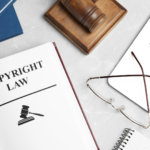Social media is a powerful tool that allows people to interact in ways that they never could before. As with any tool, there are benefits and risks from using it. Certain topics on social media draw heat from users all over the world. Certain social platforms are even notorious for more toxic users. If you want to be active online or have any kind of online presence, you run the risk of receiving personal attacks on your character. Most of the time these can just be comments from a few disgruntled people, however, you never know when the internet will pick up a negative viral sensation. That’s where the problem of defamation comes in.
Legally speaking, defamation is a legal theory that deals with slander and libel. When one is defamed, the public perception of their character is damaged either truthfully or falsely. Defamation is considered a part of personal injury law, because the defamed person may experience damages and losses because of what was said.
The definition of slander is wrongfully spoken false statements that damage a person’s reputation. Libel, on the other hand, involves written statements of the same nature.
Defamation cases, especially for persons in the private sector, are quite difficult to win. This is due to freedoms of speech, but it is possible to seek repairs for your damages.
Because most social media content will be written material, we will further discuss defamation in terms of libel. However, should there be slanderous videos or audio files published, the following can also apply. In order to build a successful libel case, these following elements must be present.
Comments are most damaging as opinions, half-truths, or otherwise, that are presented as fact. Despite the adage, “you can’t believe everything on the internet,” people will generally treat comments as the truth online. Mistaken information can also play a part in libel.
For example, a previous social media defamation case, Jacobus v. Trump, centered on political strategist and public relations consultant, Cheryl Jacobus and tweets made by the Trump campaign. Essentially, the tweets undermined Jacobus’ professional ability, and she sued for damages.
Libelous content, in order to be damaging, must be a published statement seen by a third party.
Negligence or actual malice must be proven to show fault. This means that either the at-fault party made the comments carelessly, or with intent to cause harm.
The most important part of winning a defamation case is proving the damages. In order to prove damages, they must be real, documented, and measurable. With defamation caused by social media, it is somewhat easier to track libelous comments and the effects on your reputation.
Say that you run an online business and someone publicly posts something untrue that causes you to lose business. (Note that there is a difference in defamation for businesses, but for the sake of explanation, we shall use this example.) The comments could be a review, an accusation about your business, or a personal attack on you that causes others to boycott your business.
You could track the original post, and compare that to your loss in business through website metrics. This would be a form of evidence you could use to prove damages from social media. Screenshots are another excellent way to provide evidence of damages.
However, one source of evidence will not usually win a defamation case.
Let’s discuss another theoretical example. Say you’re using Twitter or another social platform, and someone attacks you with defamatory statements. Then more users support that attack and damage your character. And then your boss sees it, believes it, and you lose your job. This could easily become a defamation case.
These statements may or may not be false. They might be half true. Either way, if there is false information in the defamatory statements, you may be entitled to compensation.
Keep in mind, damages to character could come from comments that imply that you were involved in domestic violence or sexual harassment. These particular accusations carry with them an inherent harm to character. This is defined as libel per se or comments that carry such an impactful weight, that they harm your relationships with others privately and professionally.
Even after gathering evidence, it can be very hard to win defamation cases. The previously mentioned example, Jacobus v. Trump, ended with a loss for Cheryl Jacobus, despite the damage done to her reputation.
There are several defenses that defendants can use against liability for their actions. These include:
Should the court find that one of these defenses apply to your case, they will most likely side with the defendant. Some rules of libel also apply differently to public figures versus private figures.
Because defamation law is so complicated, working with a defamation or personal injury lawyer will help you build a successful case. As you consult with your lawyer, they will help you evaluate and organize your evidence. They can help you determine if your evidence will be strong enough to pass legal defenses and prove the other party was at fault.
Damage rewards for social media defamation cases will depend on the type of damages you claim. There are four main types of defamation damages, which are, presumed, special, actual, and punitive.
Presumed damages are awarded in cases where the damaging statement was libel per se. Remember these statements are so damaging that even being accused of them causes actual harm to the accused. Beyond what we mentioned before, accusations of a loathsome disease, the committing of a crime, or unchastity are extremely damaging in most situations.
Special damages are usually awarded in cases that resulted in an actual monetary loss for the plaintiff. Think back to our business owner example, as this could be a case for special damages.
Actual Damages are awarded to the plaintiff in order to make up for their monetary loss. Essentially, it is a payment on what you lost because of the at-fault party’s words. In order to be awarded these damages, you must prove that your losses. It may be difficult to track, but it is possible.
Punitive damages are only awarded when actual malice is proven. It is less common for a plaintiff to receive these damages. There are different fault requirements for actual malice cases, and so if you feel the need to seek them, it is best to seek help from a professional defamation lawyer.
If you have been subjected to defamation on social media, do not give up hope. There are resources available to recoup your losses. At The Cochran Firm, our experienced attorneys are ready and willing to answer questions and give legal advice. We have won over $35 Billion in Verdicts & Settlements, and are ready to help you get the compensation you deserve. Reach out to us and set up a FREE consultation today. Contact us here on our website, or by calling 1-800-THE-FIRM.
Contact us today for a Free Consultation





